



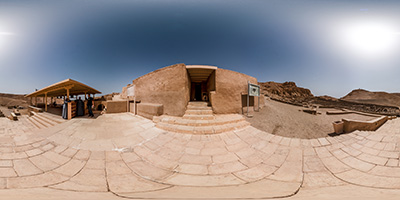
Artisans who worked on Royal tombs in both valley of the Kings and Queens lived in a village that is located between the two valleys 1 km away from each, The village was known in ancient Egyptian as "Set Ma'at" with translates to "the Place of Truth" and the workers who lived there was known as "the servants in the Place of truth".
it was founded during the reign of king "Tohtmus I" (1504 – 1492 BC) from the great 18th Dynasty, and it has been expanded twice on Thoutmosis III (1479 - 1425 BC) and at the beginning of of the Ramesside period around (1300 BC), it served it's purpose until the end of the 20th Dynasty (1070 BC).

Artisans who worked on Royal tombs in both valley of the Kings and Queens lived in a village that is located between the two valleys 1 km away from each, The village was known in ancient Egyptian as "Set Ma'at" with translates to "the Place of Truth" and the workers who lived there was known as "the servants in the Place of truth".
it was founded during the reign of king "Tohtmus I" (1504 – 1492 BC) from the great 18th Dynasty, and it has been expanded twice on Thoutmosis III (1479 - 1425 BC) and at the beginning of of the Ramesside period around (1300 BC), it served it's purpose until the end of the 20th Dynasty (1070 BC).
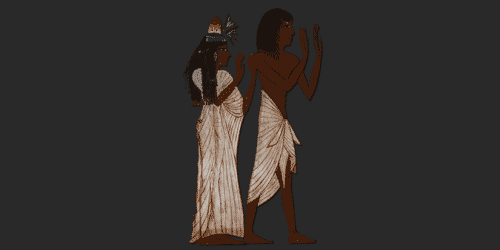
Sennedjem lived during the 19th Dynasty, under the reign of Pharaoh Seti I and the first years of Ramesses II where it is believed that he worked as a mason on both of their royal tombs. his full title is "sDm-aS m st mAat" or "Servant in the Place of Truth to the west of Thebes". The place of truth designates the Theban royal necropolis All workers of Deir el-Medina taking care of the royal tombs carried that title, so both of sennedjem sons: Khabekhnet and Khonsu were carrying this same title, although his father had a different title to that of his son, he was "Servant of Amon in the city of the South".
Sennedjem lived in the latest extension of the village, his house is located very close to his house of eternity. The tomb was discovered by Egyptian workers at Qurna on 1886 disturbing Sennedjem and his family's rest that lasted 3000 years, On February 1st, Maspéro (accompanied by Bouriant and a Catalan diplomat, Edouardo Toda) set foot on the terrain.
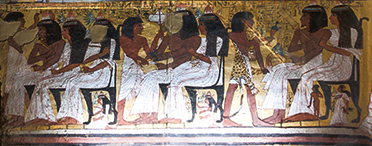
The sennedjem tomb can be considered as a collective, because at least three generations of the same family were united in the same chamber.
There were actually no less than twenty bodies discovered. Nine among them possessed very beautiful anthropoid, simple or double coffins,
finely painted and varnished.They belonged to Sennedjem, his wife Iyneferti, his son Khonsu and his wife Tamaket; also of his other children : Parahotep, Taashsen, Ramose, Isis and finally, that of a small girl named Hathor. Eleven others did not have coffins.
It is likely that these were the family's members not having had enough fortune to provide for themselves something other than shrouds and strips of fabric and to whom the head of the family offered to share his burial.
To this list, it is necessary to add two foetuses contained in uninscribed yellow wooden boxes.
Above the ground there's a three pyramidical shaped chapels that belongs to Tjaro, father of Iyneferti, Sennedjem's wife and it's the largest, The other two smaller chapels belongs to Sennedjem and his older son Khonsu, they're dedicated constructed in a rectangular shaped courtyard that's made for the living relatives to come and pay their respects to the dead.
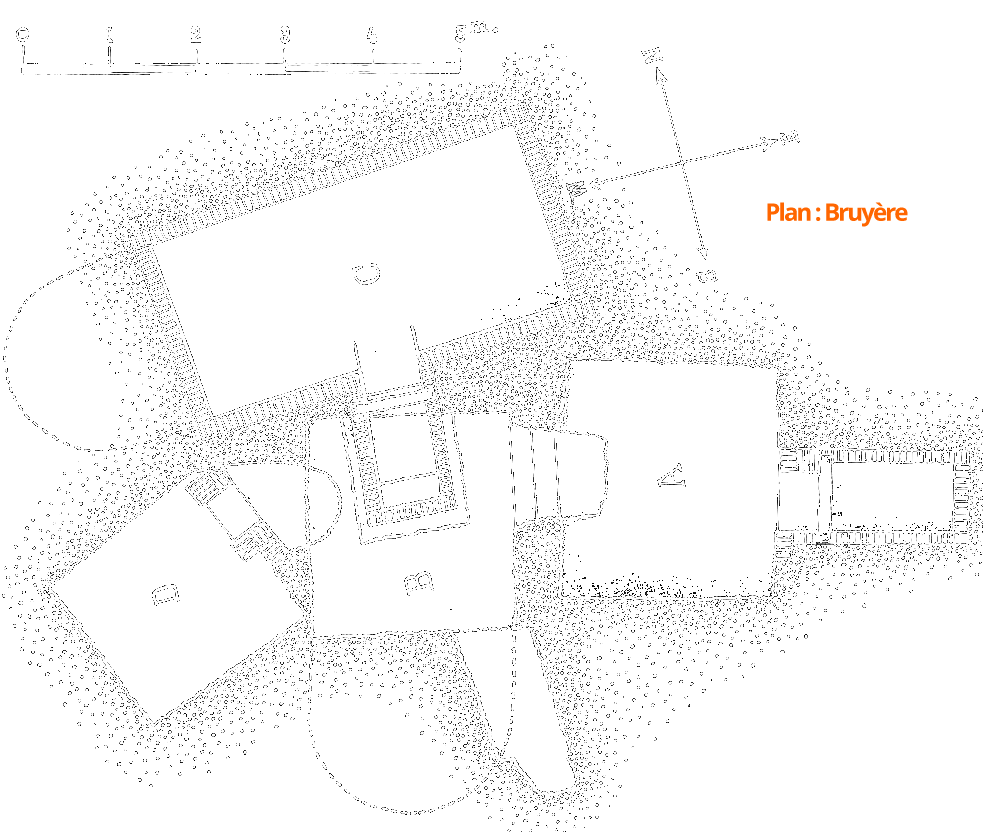
This underground complex is composed of four chambers, three of them are un-inscribed,
To the west a small narrow shaft, with a set of steps, opens on to an uncompleted room,
whose function remains debated between archeologists.
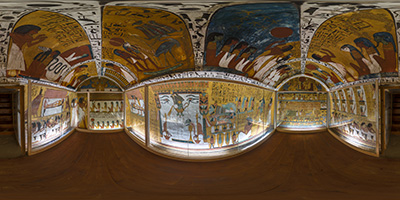
The walls are currently protected by glass panels, which is useful
for their safeguard, but disfigures the general visual impression
and is very challenging to photograph.
The Design:
The chamber is designed like the ornamentation of a Nubian sarcophagus
with a arched lid; which means that the vault includes individual scenes or tableaux,
separated by longitudinal and transverse bands, equivalent to the bands carrying
the protective texts which surround a mummy's body, or its coffin.
These bands, painted white, are covered with inscriptions in black hieroglyphs.
Notice that dark colours are predominant, which are lightened by the white bands,
giving an open window impression on to the upper world.
The Text in the White Bands:
The longitudinal bands:
are prayers to Hathor, Osiris and Re-Harakhte-Atum starting from
the band that's directly above the entrance respectively.
the Transverse bands:
each hold the name of a divinity and reads from the Center longitudinal
band and downwards to the opposing band The east west extremity bands all have the name of Thot,
thus he is represented four times,designated as "Lord of the divine words".
Anubis occupies both middle bands. The four others are the "sons of Horus",
who guard the canopic vases, where the mummified viscera of the
deceased is placed: Amsit, Hapy, Duamutef, Qebehsenuef.
To show you an example of the longitudinal band Prayers here's
The text in the Band right above the entrnce door "Prayer to thh goddess Hathor":
"An offering which the king gives to Hathor, first of the necropolis,
and to the gods and goddesses who are in the Duat. May they provide the coming in and going out
again of the underworld. Not to be refused at the door of the Duat.
For the Ka of the Osiris, the servant in the place of truth in western Thebes, Sennedjem"